|
1. Wu Ying Hua
Wu Ying Hua was born in Beijing in 1907 and was the eldest daughter of Wu Jianquan, creator of Wu Style. She began learning Taijiquan from her father at age 9. Because of her dedication and diligence, she was recognized as a top student of her father's. Thus, her father trained her very seriously. She would wake daily at 5 a.m. and practice persistently, even in the notoriously cold winter months in Beijing. After 10 years of study, she had acquired the Wu Style essence and was adept in hand and weapons forms, especially sword, broadsword, and spear. By age 17, she was a recognized teacher in Beijing.

In 1921, at the invitation of Taiji enthusiasts and Wushu professionals in Shanghai, she was invited to formally introduce Wu Style Taijiquan for the first time there. In 1926, her father, Wu Jianquan, was invited to teach in Shanghai and Wu Ying Hua served as the Teacher's Assistant.
In 1930, she married with Ma Yueh Liang. In 1933, The Jianquan (Chian Chuan) Taijiquan Association began to put together its association. Wu Jianquan was the director, while both she and Ma Yueh Liang were the Vice-Presidents.
For the next sixty years, she and Ma Yueh Liang would serve as either President or Vice President of the Jianquan (Chian Chuan) Taijiquan Association.
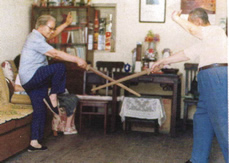
Two Person Wu style sword, Wu Ying Hua and Ma Yueh Liang
|
2. Ma Yueh Liang
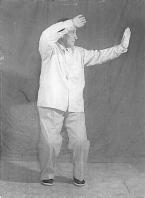 Picture: Ma Yueh Liang in the Wu style Transition to White Crane Flashes Wings posture. Picture: Ma Yueh Liang in the Wu style Transition to White Crane Flashes Wings posture.
Ma Yueh Liang was born August 1, 1901 and started school at age 5. However, by age 15, Ma's family was unable to afford his tuition. So, Ma was forced to leave school and work in Xiehe Hospital in Beijing. While there, Ma's attention to detail garnered the attention of a British physician by the name of Miss McCoy. McCoy sponsored Ma to attend the Beijing (Peking) Medical College, and after four years he graduated in 1929 with a specialty in Hematology. Afterwards, he was invited to go to Shanghai to work in Zhongshan Hospital where he eventually ran the blood clinics.
Ma always loved martial arts. In his youth, he studied Three Emperors Pao Chui, Baguazhang, Tong Bei Quan, and Shaolin Kung Fu. However, at age 18 (19 in Chinese years), he met Wu Jianquan. Wu informed the talented Ma that he would accept him as a student, but he needed to concentrate on Wu Style Taijiquan only.
From that time on, Ma Yueh Liang practiced Wu Style only. Wu Jianquan required that they practice the Slow Set, or Man Quan, 10,000 times in 3 years. Ma recalled, 'While in Beijing, Wu Jianquan ran a very strict class. A rope was placed in the middle of the room, and strewn across like a clothesline; the height of which was barely higher than the average student's height. If a student's head rose above the line, they were whacked on the top of the head with a ruler. During the practice, we were encouraged to extend both the elbows and knees but never lock them when issuing power. The tailbone had to be loose and moveable, and we were required to stand 'straight but not up;' most importantly while moving. It was extremely arduous and difficult. Because of the teacher's high expectations, I improved and developed skill very fast.'
|
|
3. Passing on the Legacy
Wu Ying Hua and  Ma Yueh Liang's two most skilled sons, are Ma Hai Long and Ma Jiang Bao. Both were taught by Ma Yueh Liang, but Ma Jiang Bao received a great deal of extra attention from Wu Ying Hua after being unable to complete medical school due to sickness. Wu Ying Hua taught a diligent and conscientious son, whose perseverance paid dividends in his recovery. Ma Jiang Bao was publicly recognized as the best family practitioner by his parents before their passing, while Ma Hai Long was given the reins to the Chian Chuan Taichichuan Association, the original society founded by Wu Chian Chuan in 1935. Pictures of Ma Yueh Liang and Ma Jiang Bao appear in the Wu style Taichichuan Push-Hands (Tuishou) book. Ma Jiang Bao resides in the Netherlands and teaches throughout Europe. Ma Yueh Liang's two most skilled sons, are Ma Hai Long and Ma Jiang Bao. Both were taught by Ma Yueh Liang, but Ma Jiang Bao received a great deal of extra attention from Wu Ying Hua after being unable to complete medical school due to sickness. Wu Ying Hua taught a diligent and conscientious son, whose perseverance paid dividends in his recovery. Ma Jiang Bao was publicly recognized as the best family practitioner by his parents before their passing, while Ma Hai Long was given the reins to the Chian Chuan Taichichuan Association, the original society founded by Wu Chian Chuan in 1935. Pictures of Ma Yueh Liang and Ma Jiang Bao appear in the Wu style Taichichuan Push-Hands (Tuishou) book. Ma Jiang Bao resides in the Netherlands and teaches throughout Europe.
Ma's other top students in Shanghai were many, but most notably were Zhang Jin Gui, Chen Xiao Chun, Zhou Zhan Fang, and Fei Gua Ching. While Chen and Zhang have passed on, the others remain committed to the practice and the search for softness and sensitivity in application. As I said earlier, the Chian Chuan Association is headed up in Shanghai by Ma Hai Long, Ma and Wu’s eldest son, who like his father, is also a Medical Doctor. Zhang Jin Gui was the secretary for many years, riding his bicycle all the way from his home near Pudong to Ma'’s house by the Shanghai Music Center every Tuesday to take care of any adminstrative issues concerning the association. Now, after his passing, the secretary is Li Guan Di, also a student of Ma Yueh Liang and Wu Ying Hua, and a practitioner of Zhou Zhan Fang and Ma Jiang Bao’s generation.
After 1980, Wu Ying Hua coauthored three significant books with Ma Yueh Liang: Wu Style Taijiquan: Forms, Concepts and Applications of the Original Style, Wu Style Simplified Taijiquan (These two titles have been updated and compiled along with many extensive previous and post-mortem notes and writings into a pivotal compilation), and the Wu Style Taijiquan Fast Set (written along with Shi Mei Ling). They also co-authored the Push Hands book, but the main translator placed his name as a co-author, and removed Wu Ying Hua’s. A partially completed weapons book, by Ma and Wu, was issued post mortem in 2001. While the work is not as complete and thorough as their previous works, the book does feature detailed photos of Wu Ying Hua performing the first series of the Wu Sword (in 94 forms), also known as the Heaven & Earth Sword; as well as, the names of many of Wu's elaborate solo weapons forms in Chinese.
Sometimes I just want to ring their doorbell on Fu Xing Center Road, and hear Ma barreling down the stairs to practice with a smile on his face, and, good cheer in his heart, raring to go, and occasionally Wu quietly entering the room offering her gentle, yet detailed advice. Her hazel eyes were encouraging and always smiled at you, while Ma's consistency and specficity as a teacher and his skills as a martial artist were nothing short of amazing and life changing. But, those days are no more. So, offering their books and videos featuring them are at least some reminder of what we shared, and hopefully those who do use the books and videos will realize that these two fine people are more than just images on a screen or a page, but were decent people who valued education, and were forever explorers of what makes us tick and brilliant, precious teachers of how to apply it.
|
4. Two Dreams Live On
Ma attributed his development and acquisition of high-level martial skill in Taijiquan to his combination of correct and patient practice with Qigong as well as his knowledge of Western Medical Science. He felt that his exposure to Western Medical Science enlightened him about the multitude of health benefits from exercise and how to optimize the exercise process. His explanations often included details about the 8 Doors (Bagua) and Five Steps (Five Phases), as well as Western Physics.
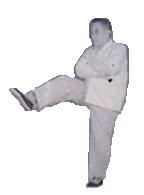
Image: Ma Yueh Liang performing the third part of "Circle Legs" from Wu Style's 8 Methods Chi Kung
In 1930, Ma Yueh Liang married Wu Ying Hua, and together they developed and led the Wu Style (Chian Chuan) Tai Chi Chuan Association (begun by Wu Chian Chuan) for over 60 years. Ma also attributed his absorption of push hands skills to his teacher Wu Jianquan, and the Sunday Afternoon Push Hands Club Wu Jianquan started after coming to Shanghai. Ma Yueh Liang passed away on March 13, 1998 nearly three years after his wife and partner, Wu Ying Hua, had passed. The passing of Ma Lao Shir was a great loss to not only the Taiji Community but to the world of authentic martial artists worldwide.
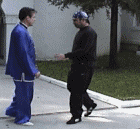 (Left: "Wave Hands Like Clouds," application from Wu Style Fast Set, Wu's Original form.) (Left: "Wave Hands Like Clouds," application from Wu Style Fast Set, Wu's Original form.)
All in all, they leave fond memories for those who knew them and a legacy of rich material both on video and in text to serve beyond their passing for future generations. We hope that the specificity in practice, instruction, and skill will continue on, as many of us who knew them personally had enjoyed for many years. Perhaps not appreciating fully what they did and who they were, until they were gone.
|
|
5. Authentic Wu Style Tai Chi
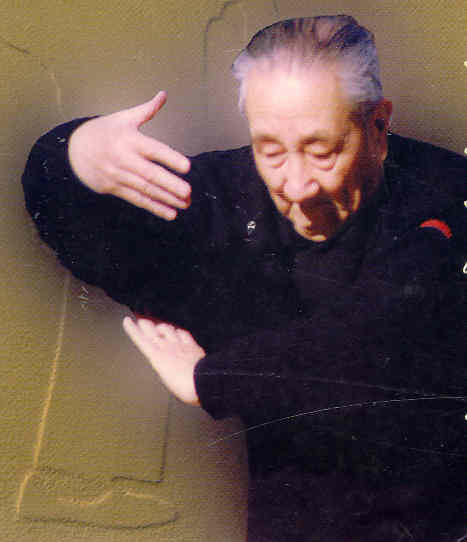
Ma Yueh Liang in transition to "Brush Knee" from Wu Style Taiji Fast Set, Wu Style's Original Form.
After Ma and Wu's passing, many claimed lineage to them or some type of connection. However, these students ought to have some paper work and (or) skills to back up their claims. Some prospective students follow potential teachers because they look authentic. They never inquire about any credentials or even test the skill of their so-called teacher. Legitimate credentials would include a copy of an application to the Chian Chuan Taichichuan Association or a certificate of study. There was a so called "Wu Family Tai Chi" book thrown together after Ma's passing that supposedly listed legitimate students of Ma Yueh Liang and (or) Wu Ying Hua. However, at least half of this book is fiction, because many people (all of the foreigners and some Chinese) had to pay to be in this book. I turned down being in this book, because simply put: This was not Ma's way of doing things. After Wu Ying Hua passed why wasn't such book put together? The reason is, with Ma still alive at that point, he would have nothing to do with such an enterprise. He was a person of honor and from his generation and time that meant something. Being the last of Ma's students to see him alive, the family asked me to sign the funeral book first. But seeing my hero go was more than I could bear, so after signing and burning incense with the family, shedding tears, I left. It was equal to losing a parent. For all of us who knew him, he was a gentle human being who took a personal interest in us all.
This is not to say that those who want to claim a connection are improper necessarily. They may be just misleading themselves, but there's no use wasting time, in my opinion, learning forms upon forms that lack authenticity or exactness (which is a hallmark of Wu Style practice). In the absence of any proof or credentials, there are many videos offered through this website and on the world wide web for that matter which show Ma and Wu demonstrating many of the basic forms. By verifying the claims people make, or by researching what is available, it is our hope that authentic Wu Style will carry on. However, despite the advances in technology in our society, for some reason, it seems we've become more illiterate to a certain extent and rely more than ever on hearsay and predetermined images, instead of doing our homework.
In addition to the personal things I received from Ma Lao Shi over the years, we shared memories and we lived it. Ma was an honorable gentleman who above all else appreciated the simple life, the arts and sciences, and wasn't arrogant whatsoever. He never wanted to be called a "Master," just simply "Teacher" (if that). He was a heck of Ma Jiang player, and loved the fact that I won the first three rounds we ever played. However, I never won three in a row again after that.
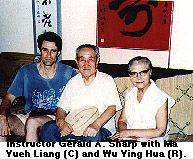
|
6. Wu Style, Primary Resources
For many years, Wu Ying Hua would perform the Slow Set and her husband Ma Yueh Liang would perform the Wu style Fast Set forms during public demonstrations. A Book and Video Combo featuring an extensive compilation of Ma and Wu's writings on the foundation, Slow Set, and Simplified of the Wu Style has been compiled by Gerald A. Sharp. This in-depth reference of 333 pp. entitled, T’ai Chi of the Wu Style features seven sources of Ma and Wu's writings, as well as Wu Ying Hua performing the entire long form, and a barrage of self-defense applications from the form. Additionally, the Store at Chi Flow has a new T’ai Chi Fast Set (Wu's Original form) Book and Video Series featuring Ma Yueh Liang, a multitude of applications from the form, and a 2nd Edition translation of their classic from the early 80s. Both video series are fully chaptered and the forms are labeled for further preservation and accuracy. We also offer the complete Chi Kung of the Wu Style, which features detailed instruction for both the Eight Methods and Five Elements sets, as well as a demonstration of the Eight Methods by Ma Yueh Liang and applications related to the Chi Kung sets. The money from these videos and aforementioned books goes back into chiflow and is also, to this day, distributed with the Chian Chuan Association, as well as certain students and family of Ma Yueh Liang. 
Ma Yueh Liang and Gerald Sharp practice Push Hands publicly at a monthly meeting of the Chian Chuan Taichichuan Association of Shanghai.
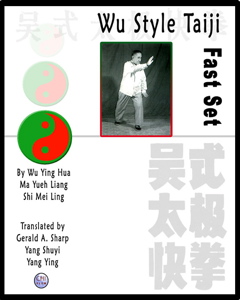
The Wu Fast Set Book, English Translation
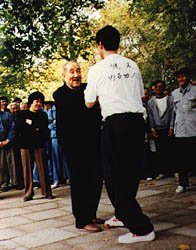
|

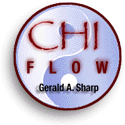

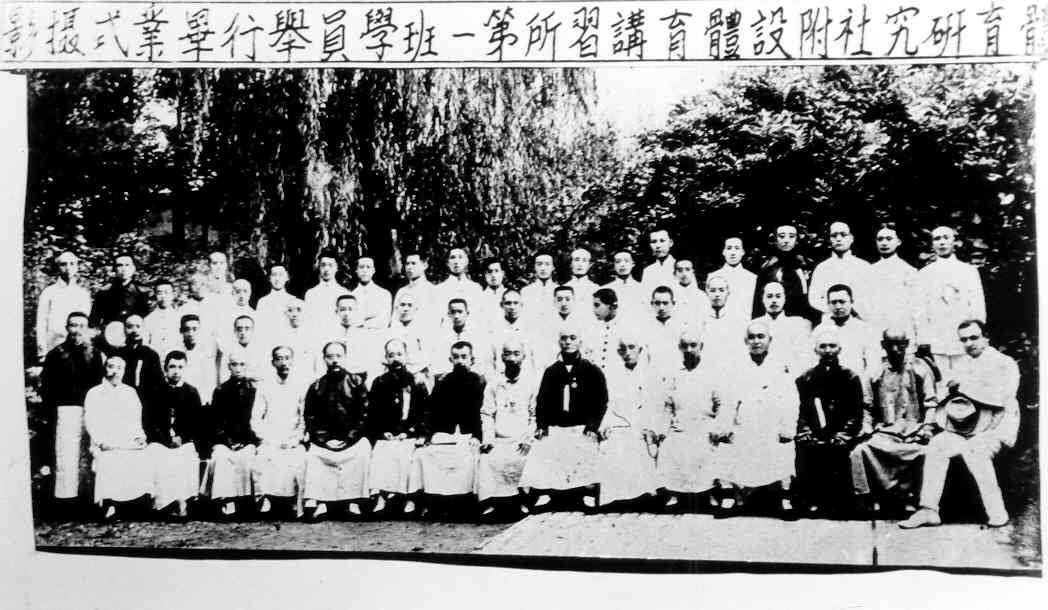





 (Left: "Wave Hands Like Clouds," application from Wu Style Fast Set, Wu's Original form.)
(Left: "Wave Hands Like Clouds," application from Wu Style Fast Set, Wu's Original form.) 




